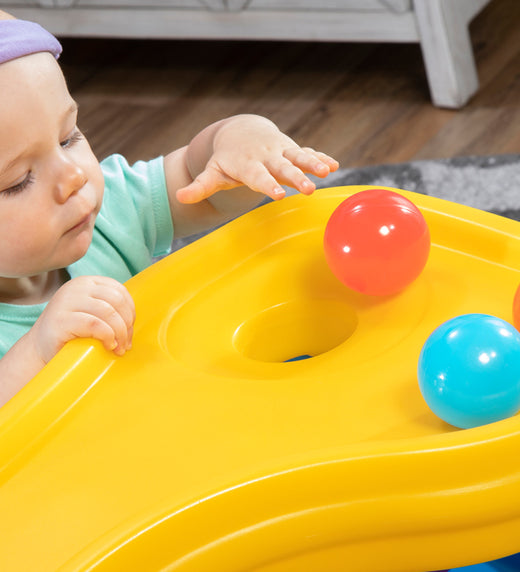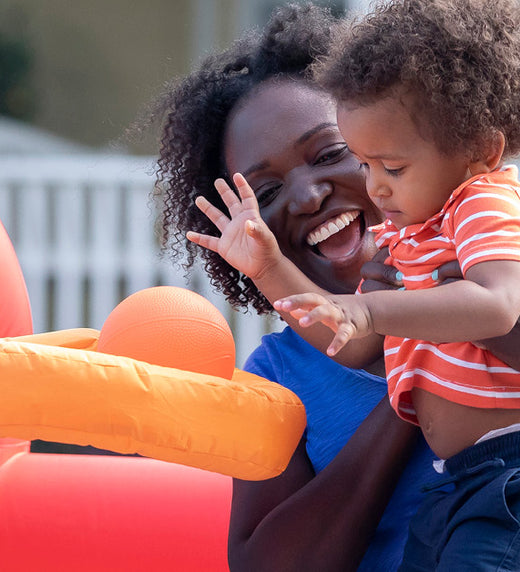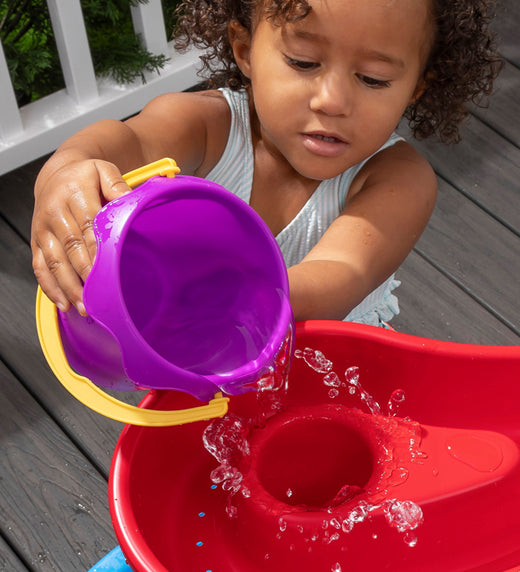
STEM education centers around science, technology, engineering, and math. So, how does this apply to your little one? Teaching your infant, toddler, preschooler, and kindergartener the principles of STEM is easier than you think—just get them playing!
Benefits of STEM toys
Introducing STEM concepts at an early age establishes lifelong thinking skills. Through play, you can get your child to explore movement, force, cause and effect, and more.
STEM toys help build creative problem skills, critical thinking, and boosts confidence. When playing with other kids, these toys help children to build social development skills, when they collaborate together to test out new scenarios and build hypotheses. Children also learn to adapt to new situations and tackle unfamiliar problems.
Learning STEM Through Play
Helping children gain these skills is as simple as letting them play. Free play without adult intervention allows children to test limits, discover new outcomes, problem solve, make mistakes and learn from them, and work together with others.
What kind of toys encourage STEM education? Let’s find out!
Water Play Exploration
Water play is great for teaching physics, buoyancy, and movement. Toys, such as the Step2 Rain Showers Splash Pond Water Table™ and Step2 Waterfall Discovery Wall™, allow multiple children to play together and explore the wonders of water.
Children can explore how water moves and flows and how the force of water can move the various maze pieces. They can also learn how some objects float on water and some sink. Help your children explore these concepts and make their own scientific guesses:
- Ask your child if they think a toy will float or sink
- Have your child rearrange the maze pieces to see how the water changes direction
- Explore water displacement by scooping and pouring water
Engineering with STEM Toys for Kids
Get your little one’s creativity and problem-solving skills going with building toys. Step2 Coasters and the Step2 Big Builders Workshop are two fun ways to get children playing in a constructive way.
The Step2 Big Builders Workshop allows kids to build their very own playhouse. They can work together with friends, snap pieces together, and discover what teamwork, engineering, and creative thinking can do.
With Step2 Coasters, children can help their parents snap the pieces together to build a fun coaster ramp. Coasters are a great way to teach the concept of physics, gravity, and building skills. By riding the car up and down the track, children can learn how gravity, motion, and force come to play. They can also see how the speed changes on different areas of the ground. You can have them explore the difference in speed on flatter ground versus a slight hill.
Before they climb on, ask your little one if they think the ground levels will change anything. Once they’re done riding the coaster, ask them again what was different about the varying landscapes.
A Lesson in Gravity
Ball play is a great way to introduce your little ones to gravity and force. Sit a round ball and a flat object on a slope, and ask your child what they think will happen. When you let go, they’ll see how the ball rolls and the flat object remains still.
A great—and fun—way to demonstrate this is with the Step2 Stem Discovery Ball Table™—it even has STEM right in the name! Little ones will have a blast watching the balls roll downhill and using the pulley system to lift and release the play balls.
Using Stem Toys to Pave the Way to a Bright Future
It’s never too early to start laying the groundwork for your child’s future education.
With STEM toys for kids, you can introduce your little one to the concepts of science, technology, engineering, and math.
STEM toys help your children build creative problem-solving skills, learn social development skills, practice critical thinking, and build self-confidence. And the best part is, you can help them achieve these skills all through play!
How do you incorporate STEM learning in your play? Share in the comments below!


